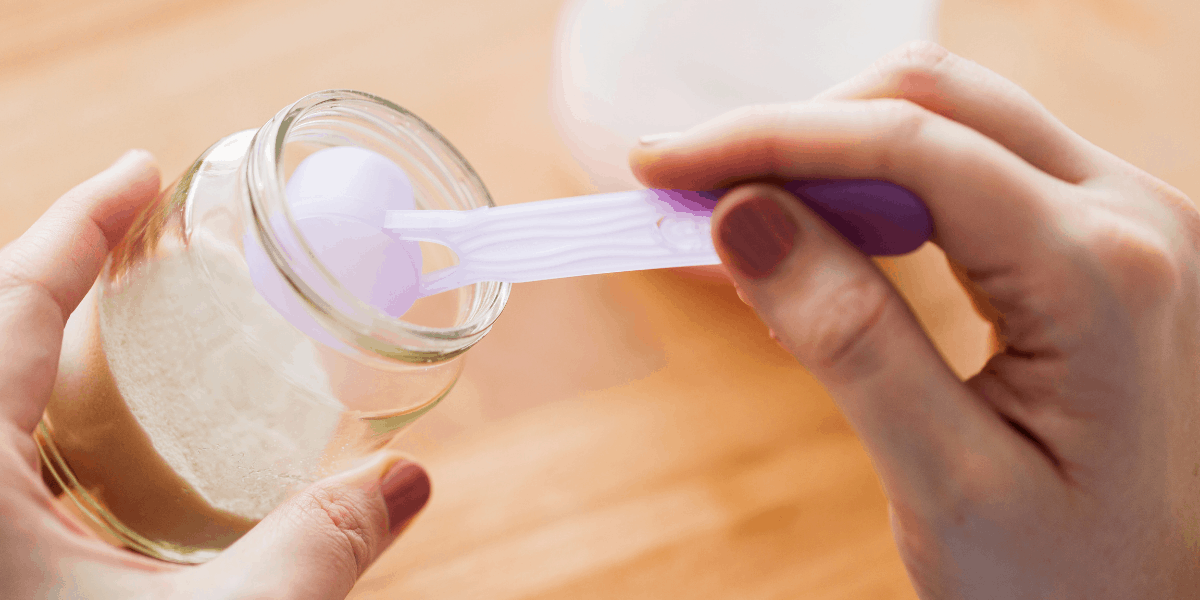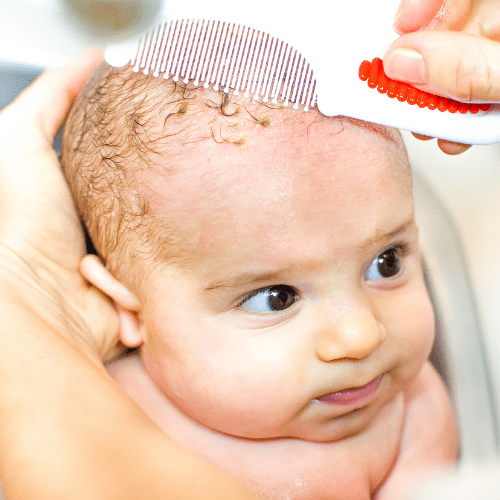Have you fed your baby old formula? Don’t worry, we all make these mistakes. Especially when we are tired or are having a busy day.
Parenting is an act of juggling. But we’ve got you covered. In this article we will talk about what to look out for if your baby has drank old, or spoiled formula, how to know if it is old, and how to help you stop it from happening again.
Firstly, old formula is classed as being over 2 hours old. Once formula is made up, it is advised that it is used within 2 hours. If there is any left in the bottle after that timeframe, it should be discarded of. If you are unsure about whether the formula is old or not, it is best to discard it, rather than risk making your baby unwell.
If your baby drinks old formula, they can become susceptible to bacteria. This bacteria tends to grow inside the bottle, or the teat. Once the baby has drank from that bottle, that bacteria is then introduced in to the babies immune system.
It is important to remember that your baby’s immune system isn’t very strong yet, which is why they can become unwell. Bacteria can also be introduced from the powder itself, if it has been left out and open for a long time.
The most common symptoms of drinking old formula is diarrhoea and vomiting. Make a note of how many times your baby is having diarrhoea and vomiting. This is your babies body trying to get the bug out of its system.
Ensure your baby is kept hydrated and still has wet diapers. This may make them lethargic as well. If you think your baby is becoming dehydrated, or the diarrhea and vomiting doesn’t settle, seek medical help.
It is really important to follow best practices, and the manufacturers guidelines when making and serving formula. This will help prevent bacteria being introduced to your baby.

How to Burp a Baby That is Hard to Burp
As an Amazon Associate I earn from qualifying purchases. The links below may be affiliate links. Please read my disclosure policy for more information.
How to make formula
- Fill your kettle and boil the water. Do not use water that has been boiled before.
- Leave the water to cool for no longer than 30 minutes. Make sure the temperature remain at 70C.
- Clean the surface you are going to use and wash your hands
- If you are using a cold water sterilizer, rinse the bottle with the cooled water from the kettle. Bottled water is not recommended as may contain too much sulphates for your baby.
- Stand the bottle on the clean surface, and follow the manufacturers instructions for how many scoops and water to use. Each manufacturer is slightly different. It is advised to put the scoops in first, then the water.
- Screw the ring with the teat on to the top of the bottle.
- Put the cap on and shake until dissolved.
- Check the temperature of the water. Make sure it is not to hot by dabbing some on the inside of your wrist. It shouldn’t feel hot or cold.
- If there is any formula left in the bottle that hasn’t been drank, discard it.
How to clean a bottle
- Clean in hot, soapy water as soon as you have finished a feed.
- You can get bottle brushes to use to clean your bottles with, and teat bottles. Only use your cleaning brushes for cleaning feeding equipment and nothing else. Do not use salt to clean your bottles with as this can be harmful for your baby. You can squeeze water through the teat so it cleans inside the teat too.
- You are able to use a dishwasher to clean your feeding equipment, ensure they are inserted in to the dishwasher face down. This will clean the equipment but not sterilize it. Always follow your equipment’s manufacturer guidelines in regards to using a dishwasher. You can put them on a hot cycle to kill more germs and air dry if dishwashing.
- Now rinse your equipment in cold water.
How to sterilize a bottle
There are three main ways to sterilize a bottle
Cold water sterilizing technique:
- Leave your feeding equipment in the sterilizing solution for 30 minutes.
- Change the solution every 24 hours.
- Ensure no air bubbles are in the bottle or teat when putting them in the sterilizing solution.
- The sterilizing should be equipped with a plunger or another tool to keep the floating bottoms under water.
Steam sterilizing technique:
- Ensure your feeding equipment is placed downwards in the sterilizer.
- The manufacturers guidelines will tell you how long you can leave your equipment in the sterilizer for. You can squeeze any solution through the teat to sterilize that area.
- This can be done in an electric sterilizer or microwave.
Boiling sterilizing technique:
- Ensure your items are safe to be boiled before boiling them.
- Use a large pan to boil the bottle in water for ten minutes. Make sure the bottle stays under water and set a timer.
- Teats are known to become damaged more quickly using this method, and sometimes, bottles become cracked. Cracks and damage can also lead to a build up of bacteria.
- Use a clean set of tongs to remove them from the water to avoid burning yourself.

After you have sterilized
- Leave bottles and teats in a sterilizer until you need them.
- Wash your hands before handling any feeding equipment.
- Place your bottles on a clean surface.
- Avoid any unnecessary handling.
Also, it is not best practice to heat formula in a microwave. Reasoning for this, is that it may heat the liquid unevenly and burn your baby’s mouth.
How to stop your baby drinking old formula again
- Label the bottles. Write a date and time on them, so then if you go out when your partner comes home, and the feeding duties swap, this will help reduce confusion over whether the formula is able to be used or not.
- Switch to liquid formula. Liquid formula is more expensive but may help to prevent feeding old formula to your baby. It does have to be used within one hour instead of two hours. Follow the manufacturers guidelines and make sure all feeding equipment has been cleaned and sterilized. Do not freeze liquid formula, or any other version of formula.
- Pay attention to your baby’s feeding habits and only make up what you need. This helps to reduce the risk of formula hanging around, and then being fed to your baby by accident. It will also help you to gain more control over the formula you are using, and not get through it quite so fast.
- Be kind to one another! Being a new parent is incredibly stressful and can put a strain on your relationship. It’s very easy to take your stresses out on one another and point the finger. But truth be told, this doesn’t solve anything, apart from create more stress and heightens the risk of mistakes.
Simple Steps to Keep a Pacifier in Baby’s Mouth
Our Top 3 Sterilizers
Can I keep formula that has been heated in the fridge?
Best practice is to throw any left-over formula that has been made away. You can keep liquid formula in the fridge as it is already a sterilized bottle.
How many times can you reheat formula?
You can only heat formula once upon the initial time of making it. You can’t heat formula again, or heat left over formula. This is because the milk will spoil and bacteria can grown.
My baby didn’t finish the bottle of formula, can I reuse it?
No; you can not reuse it. Any left-over formula should always be discarded.
How long does a bottle of formula last at room temperature?
You can keep baby formula for 2 hours after you have made it. If it is liquid formula, you can only keep for 1 hour. If you feed your baby formula that has gone over this time frame, you risk making them unwell. Always discard any unused formula.
How long does powder formula last once opened?
One opened, powdered formula can last up to 4 weeks. Always check the packaging for expiry dates.

What happens if a baby drinks spoiled formula?
Foodborne and other bacteria can grow in bottles and teats that have spoiled milk in, or, milk that has been made up for multiple hours and not used. If bacteria is introduced in to your baby’s system, they can suffer with diarrhea and vomiting. This can be serious in babies. Keep you baby as hydrated as possible using water. If you feel the diarrhea and vomiting is not settling, seek medical help early. Or if you feel your baby is becoming dehydrated.
Can I reheat untouched formula?
No, you can not reheat formula under any circumstances as this will encourage bacteria to grow and spread. If you are finding you are wasting lots of formula, make note of your baby’s feeding habits to try and avoid making more formula than you need, or you have it ready for when your baby usually wants it.
Can I reheat untouched formula?
No, you can not reheat formula under any circumstances as this will encourage bacteria to grow and spread. If you are finding you are wasting lots of formula, make note of your baby’s feeding habits to try and avoid making more formula than you need, or you have it ready for when your baby usually wants it.
Can I use a microwave to heat formula?
Microwaves are not advised to reheat formula. This is because microwaves may heat the liquid unevenly and you could inadvertently burn your baby’s mouth.
Is liquid formula better than powdered?
There is no difference in nutritional value between the 2 types of formula. However, powdered formula is cheaper than liquid. Liquid is better for convenience but is more expensive. It also can not be kept for quite as long as powdered.









